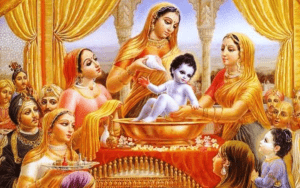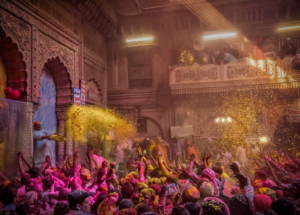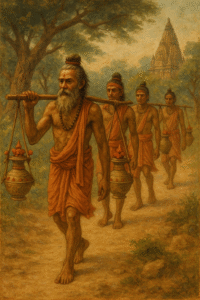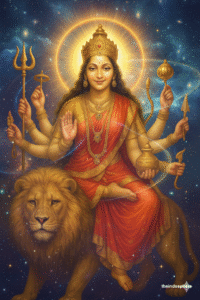Imagine a world where a simple forest girl captures the heart of a mighty king, where curses erase memories, and where love survives separation, despair, and time itself. This is Abhijnanashakuntalam, Kalidasa’s masterpiece that has captivated audiences for over fifteen centuries.
A Story Beyond Time
Abhijnanashakuntalam means The Recognition of Shakuntala. Based on an episode from the Mahabharata, Kalidasa transformed it into a seven-act play brimming with poetic beauty, nature’s grandeur, and profound emotional truth.
The play opens with King Dushyanta entering a forest during a hunt. There he meets Shakuntala, the foster daughter of Sage Kanva. In that serene hermitage, love blossoms between the royal visitor and the innocent maiden. Their secret Gandharva marriage – solemnised by mutual consent and witnessed by nature alone – binds them with promises of reunion.
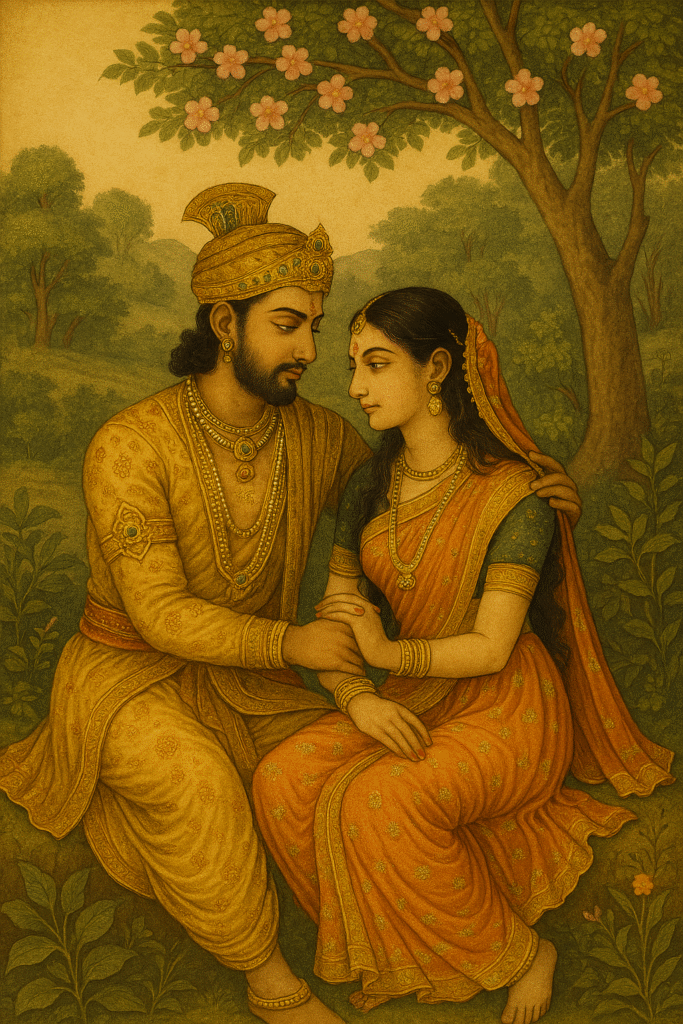
But fate intervenes. Absorbed in thoughts of her absent husband, Shakuntala fails to greet Sage Durvasa. His infamous temper flares, and he curses her: the one she thinks of will forget her. Only a token of recognition can lift the spell.
When Sage Kanva sends Shakuntala to Dushyanta’s palace, she loses the king’s ring while crossing a river. At court, Dushyanta fails to recognise her. Heartbroken, she vanishes, taken away by apsaras to a celestial hermitage where she gives birth to their son, Bharata.
Time passes. A fisherman finds the lost ring inside a fish and returns it to the king. Memories flood back. Wracked with remorse, Dushyanta sets out in search of Shakuntala. In the heavens, he finally finds her and meets his son, fulfilling prophecies of Bharata becoming a mighty emperor whose name India carries to this day (Bharat).
Why This Play Still Matters
Kalidasa’s brilliance lies not just in weaving an engaging story but in elevating it into a meditation on love, memory, and destiny. His imagery is so vivid that even translations carry an echo of its original beauty. When Dushyanta first sees Shakuntala, he says:
“Her beauty’s charm is heightened by her simple dress – like a bright flame rising from dark smoke.”
Kalidasa turns every scene into poetry. Nature isn’t mere backdrop here; it breathes alongside the characters, reflecting their emotions.
Themes That Resonate Even Today
Love and Longing:
The play celebrates viraha – love in separation – as a powerful, purifying force that tests and deepens true affection.
Memory and Identity:
When the curse erases memory, love remains dormant, not dead. Recognition restores identity and relationships, affirming that who we are is rooted in what and whom we remember.
Forgiveness and Dharma:
The story ends not in punishment but in forgiveness, portraying dharma (righteousness) as rooted in compassion, not mere rules.
From Sanskrit Stage to World Literature
When Sir William Jones translated Shakuntala into English in 1789, Europe was stunned. The great German poet Goethe was so enchanted he wrote:
“Wouldst thou the young year’s blossoms and the fruits of its decline, all in one name combine? Shakuntala is that name.”
Since then, the play has been adapted into countless languages, dance dramas, ballets, and films. Its universal themes and emotional truth make it as relatable to a modern audience as to Kalidasa’s contemporaries.
Why Read Abhijnanashakuntalam Today?
Because it reminds us that love is not about instant gratification or dramatic confessions alone. It is about patience, memory, pain, and reunion. It is about losing and finding, about curses turning into blessings, and about discovering that nature, gods, and destiny often conspire to fulfil what the heart truly desires.
Final Thought
Kalidasa didn’t just write a play. He created an experience where poetry becomes life, and life becomes poetry. Abhijnanashakuntalam is not just a literary classic; it is a mirror reflecting the timeless depths of human love and the silent workings of destiny.

